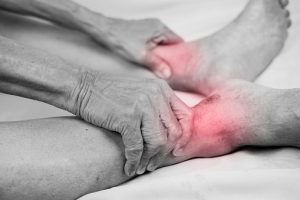
Sprains: They typically occur due to over-stretching or tearing ligaments—the tissues that connect bones to each other and stabilize them. Falling, twisting, or getting hit can force a joint out of its normal position, causing a sprain.
“Sprains occur when the joint is forced into an unnatural position. They happen most often in the ankle but can occur at any joint, such as the wrist or knee,” said Martin Mufich. “A mild sprain should take approximately seven to ten days to heal,”
Strain: These occur when you stretch or tear a muscle or tendon—a fibrous cord of tissue that connects muscles to bones. Strains commonly occur in the lower back and in the hamstring muscle in the back of the thigh. Symptoms include muscle spasms, weakness, cramping, immobility, pain, bruising, and swelling. It may take a few weeks for symptoms of a mild or moderate strain to disappear.
“An acute strain is an instantaneous stretch or tear of the muscle or tendon, whereas, a chronic strain stems from repetitive motions over time that place stress on the muscle or tendon,” Mufich said. “Typically, the worse a tear, the more inflammation and pain a person will experience, and the longer it will take for the injury to heal,”
While both injuries are technically different on a physiological level, they are both treated in very much the same way. In general, the treatment of sprains and strains involves a plan called RICE—Rest, Ice, Compression, and Elevation. While this is effective in the majority of cases, severe tears in the knee may require treatment with surgery.
According to Mufich, it is normal to experience some pain and discomfort when recovering from a sprain or strain, but there should not be any sharp pain.
“If you are not seeing improvements within 24 hours or it is getting worse, contact a health-care provider,” he advised.
Related: Left arm pain: Causes, treatment, and tips for left arm pain